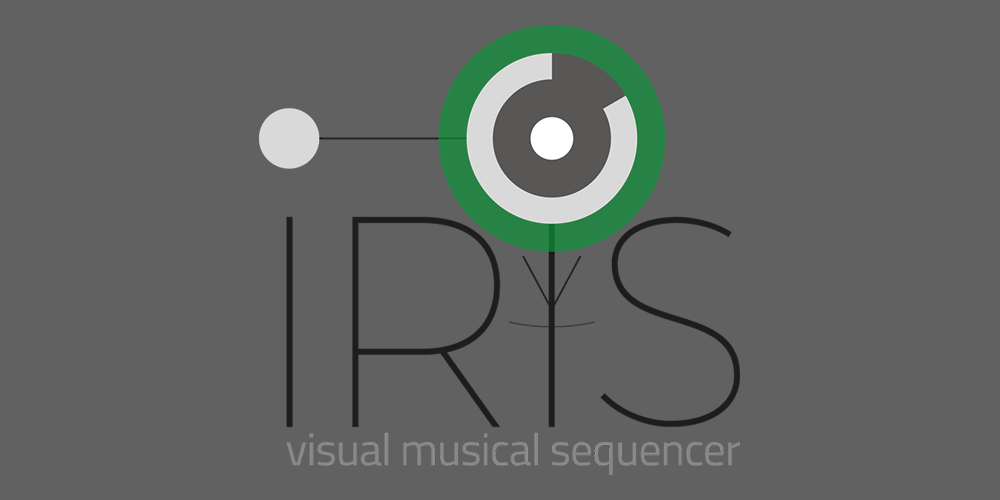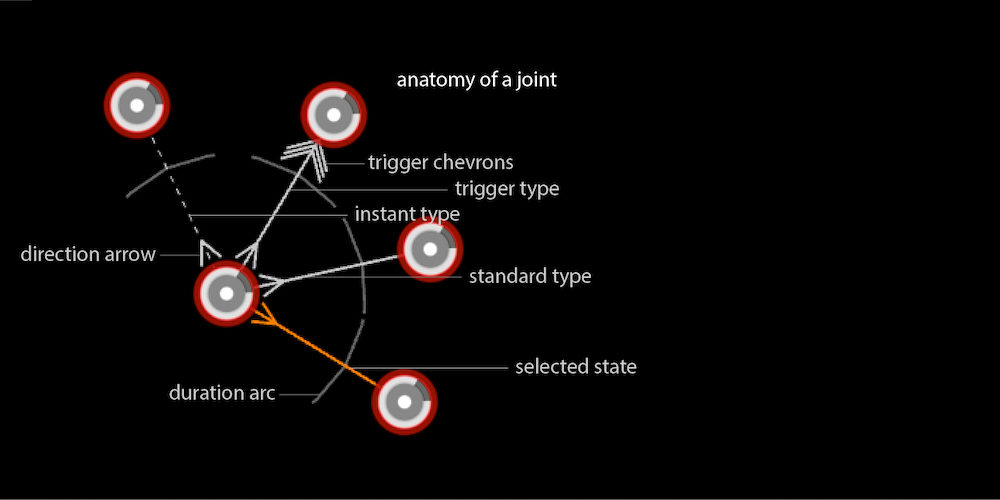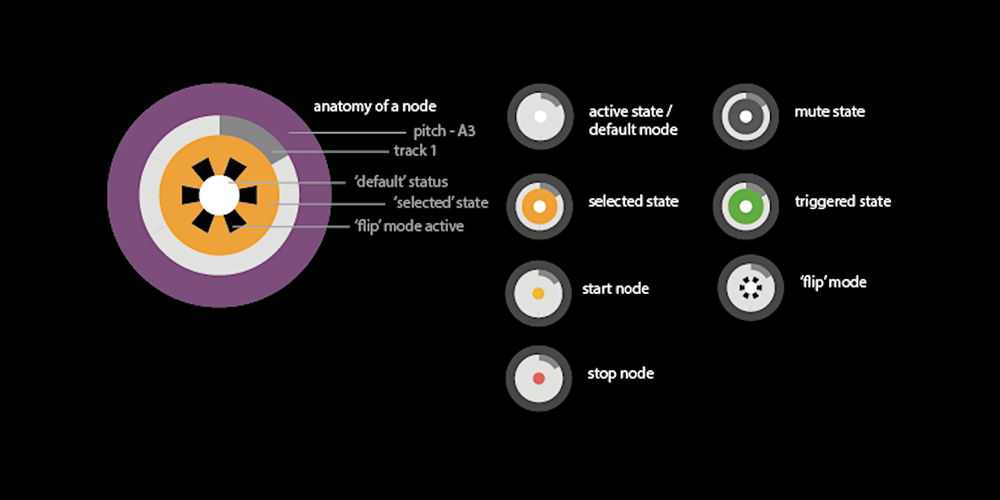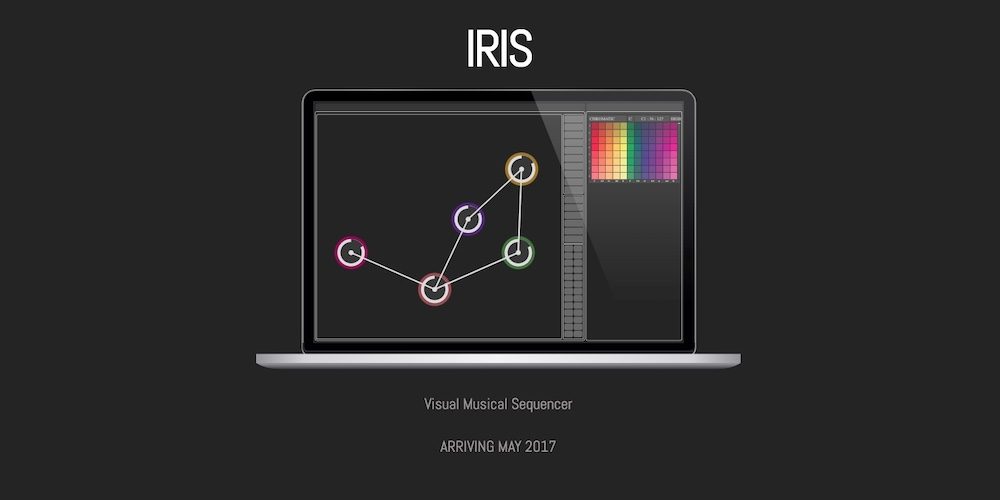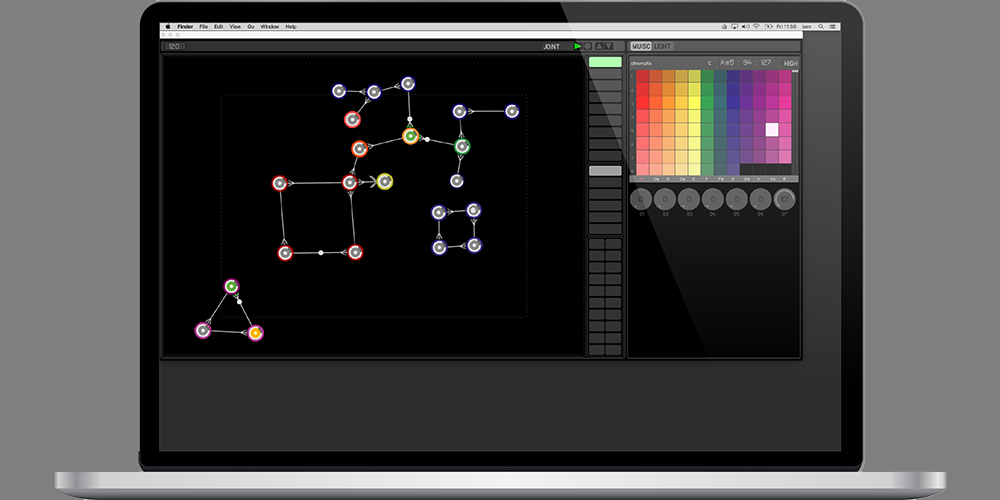IRIS
IRIS is a visual musical sequencer.
Originally conceived as a custom sequencing and recording module for my Practice as Research Ph.D. project, The Augmented Tonoscope – it subsequently evolved from a ‘proof of concept’ to working ‘alpha’ prototype – developed in the creative C++ toolkit openFrameworks.
I worked on it with creative collaborator Ben Lycett off & on for close to four years – refining functionality, incorporating new ideas and growing it organically. While it’s now comparatively feature rich and complex we never managed to get it ready for commercial release (though we came very close to launching a Kickstarter campaign to help get it there) – and Ben has since promoted it independently via Facebook.
We made no claim that IRIS was wholly original – the concept of node based sequencing isn’t new – though we think our implementation has features that make it unique in the field. Our inspiration came from Hans Kuder’s Tiction – a nodal music sequencer built in Processing – as well as other applications from around the late Noughties such as Noteworks and CEMA Research’s Nodal. Some of these subsequently evolved into apps for the iPad, taking advantage of its multitouch functionality and emerging market of users with an appetite for more playful music generating tools.
Some early promo copy describes IRIS‘ functionality…
IRIS is a new type of sequencer – MIDI without the timeline – a freer, more creative way of making music.
It’s a space to experiment, a place to explore, somewhere to enjoy.
IRIS is a novel music production tool – standalone creative software that plugs into your favourite DAW – we use it with Ableton Live.
Instead of the usual grid of notes against time, it uses chains of nodes connected by joints.
Close a chain and you have a cyclic rhythm or looped melody line.
Branch a chain and you create ‘one-shot’ events, chords and cascades.
Combine different node and joint types to build and trigger chains and loops across IRIS’ nine spaces and six tracks. Before you know it you have a set of sonic patterns and rhythms that are rich and complex yet easy to visualise and simple to control.
With IRIS it’s effortless to implement creative programming and performance techniques that while possible in traditional sequencers aren’t always straightforward to realise. For example:
– trigger a chain from any node along its length;
– trigger a chain from a node in a different chain;
– reverse a chain’s direction of play;
– add ‘one shot’ events with their own trigger offsets to create variations over time;
– build chains with alternate ‘routes’ to create complexity over time;
– combine chains with multiple ‘time signatures’ to create polyrhythmic rhythms and sequences.It’s exactly this ease of use that makes IRIS such an adaptable yet highly controllable live performance tool.
Its 20 presets not only save the relationship between loops and chains but also dynamic changes to the characteristics of your soft synths and plugins via MIDI Control Change messages. You can then jump between these presets with a single mouse click – or mix between the first 16 of them using a physical controller such as a Novation Launchpad or monome64.
IRIS can also control DMX lights – it essentially treats colours as if they were notes – allowing you to create perfectly synchronised light shows at the same time as you compose music.
We think this way of making computer music is evolutionary – re-imagining the ever-present grid of notes against time that has endured since the mechanical music box.
Yet IRIS does more than just streamline the usual repetitive copy and paste workflow with a handful of dynamic patterns – it offers a surprisingly flexible and deceptively powerful approach to making and performing music.
I subsequently found and downloaded a promo video of IRIS in action from Ben’s draft Kickstarter page (he shouldn’t mind)….
[UPDATE] – I recently contacted Ben to catch up on IRIS development I may not have been aware of. He’d created a series of tutorial videos – available on his IRIS YouTube Channel.
